Precautionary measures
Do not use open flames, do not smoke and bring incandescent or very hot objects to the workplace - this is a fire hazard! Prepare a fire extinguisher.
Ensure good ventilation of the workplace - fuel vapors are poisonous.
The fuel system is under pressure. When the system is opened, gasoline may spray out, which must be collected with a rag. Wear protective goggles when working.
Attention: A special pump is required to extract the fuel. A jack and four stands are required to support the vehicle.
Removing
Drive a car so that all the gasoline from the tank is used up.
Disconnect the negative cable from the battery with the ignition off. This erases data from electronic memory blocks, such as radio codes. See instructions in chapter «electrical equipment».
Unscrew the cap of the fuel tank and suck out the remaining fuel from the tank with a pump, guided by the instructions for its operation.
Raise and support the vehicle.
Unhook the exhaust system front and rear from the rubber suspensions, lower it slightly and hang it on a wire under the bottom of the body.
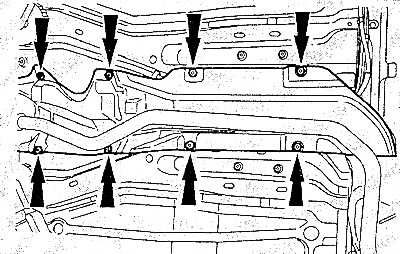
Unscrew and remove the middle and rear heat shields of the exhaust system.
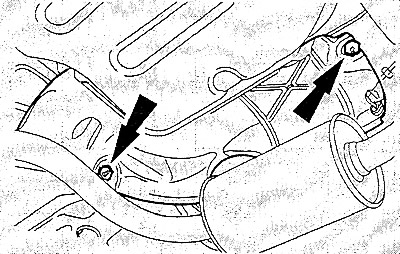
Ford Fiesta/Mazda 121: unscrew the bolts and remove the tank heat shield.
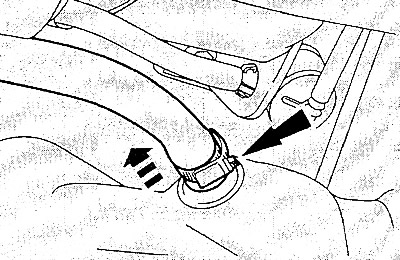
Loosen the hose clamp and pull the ventilation hose off the tank.
Support the rear of the vehicle and support the fuel tank with a jack with a block of wood under the fuel tank head so as not to damage the surface of the tank.
Precautions: The petrol injection system is under pressure. When the system is opened, fuel may spray out, which must be collected with a rag. Wear glasses while working.
Petrol engine: Place a container to drain. Pull the fuel outlet line off the quick connector on the fuel filter.
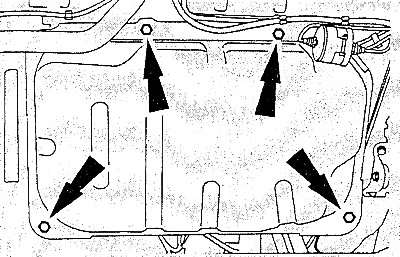
Loosen the bolts and carefully lower the fuel side a little.
Attention: The filler neck remains on the vehicle. Unhook the tank from the filler neck.

Disconnect fuel quantity sensor/fuel pump connector.
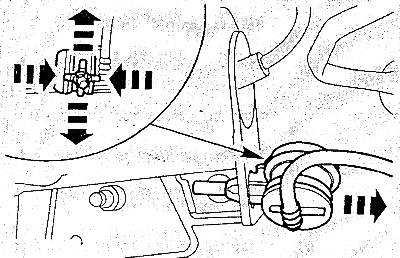
Pull the fuel return line off the top of the tank by squeezing the quick release fitting. On a diesel engine, remove the two fuel lines. To facilitate installation, it is better to mark the connecting fittings and fuel lines with strips of adhesive tape.
Pull off the ventilation piping from the safety valve. Remove the safety valve from the holder.
Check if all wires, tubes and hoses are disconnected. Take out the fuel tank.
Installation
Before installing, check the fuel tank for damage and replace if necessary.
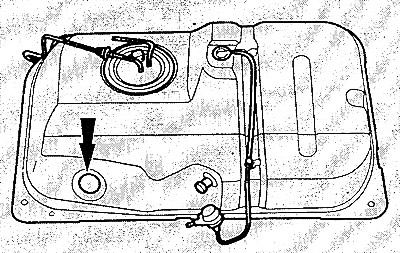
Lubricate the filler neck seal at the tank with clean engine oil to make it easier to put on the neck.
Place the fuel tank in installation position and plug in the fuel gauge/fuel pump plug.
Insert the safety valve into the holder, put on the ventilation hose.
Put on the top fuel line (fuel lines) for quick connections.
Install the fuel tank and secure it with bolts. О Petrol engine: push the fuel hose connection onto the fuel filter.
Push the vent line over the top of the fuel tank and secure it with a clamp.
Install the heat shield on the underbody.
Hang the exhaust system on rubber hangers, remove the wire on which it hung earlier.
Lower the car.
Fill the tank with fuel and tighten the tank cap.
Connect the negative cable to the battery. Set the clock and enter the required radio codes.
Start the engine and check the operation of the fuel gauge on the instrument panel.
